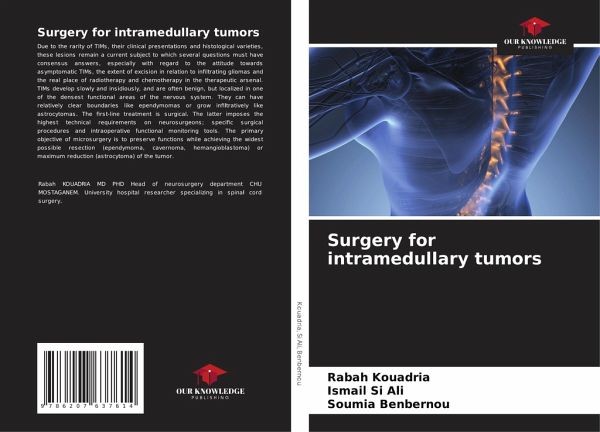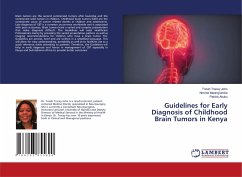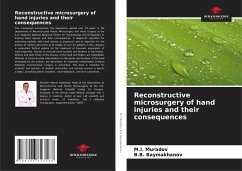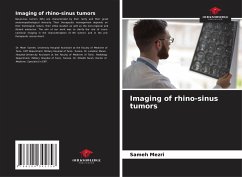
Surgery for intramedullary tumors
Versandkostenfrei!
Versandfertig in 6-10 Tagen
45,99 €
inkl. MwSt.

PAYBACK Punkte
23 °P sammeln!
Due to the rarity of TIMs, their clinical presentations and histological varieties, these lesions remain a current subject to which several questions must have consensus answers, especially with regard to the attitude towards asymptomatic TIMs, the extent of excision in relation to infiltrating gliomas and the real place of radiotherapy and chemotherapy in the therapeutic arsenal. TIMs develop slowly and insidiously, and are often benign, but localized in one of the densest functional areas of the nervous system. They can have relatively clear boundaries like ependymomas or grow infiltratively...
Due to the rarity of TIMs, their clinical presentations and histological varieties, these lesions remain a current subject to which several questions must have consensus answers, especially with regard to the attitude towards asymptomatic TIMs, the extent of excision in relation to infiltrating gliomas and the real place of radiotherapy and chemotherapy in the therapeutic arsenal. TIMs develop slowly and insidiously, and are often benign, but localized in one of the densest functional areas of the nervous system. They can have relatively clear boundaries like ependymomas or grow infiltratively like astrocytomas. The first-line treatment is surgical. The latter imposes the highest technical requirements on neurosurgeons; specific surgical procedures and intraoperative functional monitoring tools. The primary objective of microsurgery is to preserve functions while achieving the widest possible resection (ependymoma, cavernoma, hemangioblastoma) or maximum reduction (astrocytoma) of the tumor.














